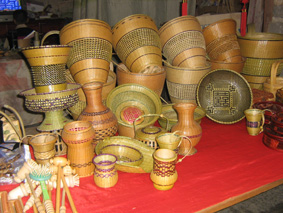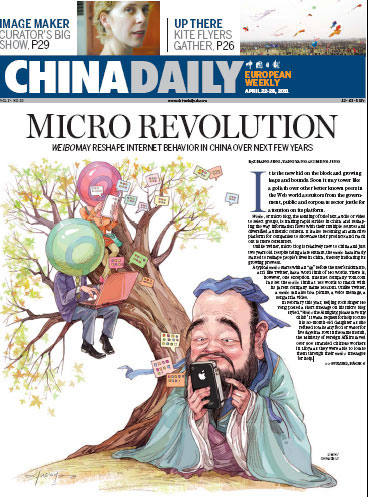Tradition
Chinese bamboo culture
Updated: 2011-03-24 13:59
(chinaculture.org)
Bamboo and Music
Bamboo also has close ties with Chinese music. Among the cultural relics unearthed from the Zenghouyi tomb in Suixian County, Hubei Province, the 13-tube bamboo panpipe was the earliest one ever discovered. During the Tang Dynasty (618-907), musical performers were called zhuren (literally "bamboo people"), as most of the instruments were made of bamboo.

Bamboo is indispensable to many traditional Chinese musical instruments, including the flute, sheng, zheng, jinghu, erhu and banhu. China's first national bamboo orchestra has a great variety of bamboo musical instruments, such as a dozen kinds of bamboo flutes, bamboo dippers, a bamboo percussion instrument composed of five or six drums of different sizes, and the huge dragon drum made of the world's thickest bamboo. When enjoying the pleasant music played by a buffalo boy with a bamboo flute, a love melody played by Miao young people with a lusheng, and some modern popular music played with bamboo musical instruments, one will be intoxicated with the purest sounds of nature.
Bamboo and Bamboo Products
Bamboo basketwork was first invented by the Chinese people during the New Stone Age. Ancient people wore a large bamboo hat to protect them from rain and bamboo shoes to walk on muddy roads.

Bamboo cloth was invented in the Eastern Han Dynasty (25-220) and became a tribute to the emperors. With the development of the society and the progress in cultural life, there were an increasing variety of bamboo products including seats, such as bamboo chairs, bamboo stools and bamboo sofas; and sleeping furniture, such as bamboo deck chairs, bamboo beds, bamboo mats and bamboo pillows. Clothing was also made of bamboo, including bamboo hats and bamboo shoes. They also made decorations, including bamboo screens, bamboo curtains, bamboo vases and bamboo lanterns. As for containers, there are bamboo cupboards and bamboo cases; tableware, such as bamboo bowls and bamboo chopsticks; and writing materials, like bamboo brushes and bamboo pen containers. Farmers use bamboo tools like bamboo baskets, bamboo brooms and dustpans, and bamboo poles, as well as fishing tools, means of transport and many other daily necessities.
People appreciate bamboo carving as one of the special handicrafts of China. This traditional art took shape in the Six Dynasties (222-589) and became popular during the Ming (1368-1644) and Qing (1644-1911) dynasties. The intelligent ancient Chinese not only made various daily necessities and tools for production with bamboo, but also engraved them with beautiful decorative patterns. Bamboo carvings cover a wide range of subjects such as images of Buddha, figures, flowers, animals, landscape and pavilions.
E-paper

Blowing in the wind
High-Flyers from around the world recently traveled to home of the kite for a very special event.
Image maker
Changing fortunes
Two motherlands
Specials

Urban breathing space
City park at heart of Changchun positions itself as top tourism attraction

On a roll
Auto hub Changchun also sets its sight on taking lead in railway sector

The stage is set
The Edinburgh International Festival will have a Chinese flavor this year.
